Honor Magic V3
The Honor Magic V3 is even thinner, plus it adds wireless charging and gets a better camera. But, it also faces tougher competition. Is it the way to go?
Pros
- Stunningly thin build
- Wireless charging!
- Good battery life
- Beautiful displays
- Flagship performance
Cons
- Some camera issues
- Software isn’t great
The Honor Magic V series of foldable phones doesn’t get enough attention. Of course, much of that simply comes down to the fact that the devices are only available in some regions, and those regions don’t include the U.S. But for a few years now, Honor has been proving itself able to make some of the most premium, well-built foldable devices on the market.
In fact, the Honor Magic V2 was the thinnest foldable phone available while still offering decent battery life and good performance. That device would still be the thinnest foldable phone you could get if it weren’t for a new one in the form of the Honor Magic V3. Like the V2, the Magic V3 is still unavailable in the U.S., so you won’t be able to get it stateside without jumping through some hoops. But I wish that weren’t the case. The Honor Magic V3 isn’t perfect, but it’s even better than the V2 in a few meaningful ways, like with a better camera and, if you can believe it, an even thinner build.
Honor Magic V3 specs
| Dimensions | Folded: 156.6 x 74.0 x 9.2 mmUnfolded: 156.7 x 145.3 x 4.4 mm |
| IP rating | IPX8 |
| Display resolution | Cover: 1,060 x 2,376Internal: 2,156 x 2,344 |
| Display size | Cover: 6.43 inchesInternal: 7.92 inches |
| Display type | LTPO OLED |
| Display refresh rate | 120Hz |
| Display brightness | Cover: 5,000 nits (peak)Internal: 1,800 nits (peak) |
| Chipset | Qualcomm Snapdragon 8 Gen 3 |
| Memory | 16GB |
| Storage | 256GB, 512GB, 1TB |
| Rear cameras | Wide: 50MP, f/1.6, OISUltrawide: 40MP, f/2.2, 112-degreesTelephoto: 50MP, f/2.4, 3.5x optical zoom |
| Video | 4K 60fps |
| Front camera | 20MP, f/2.2 |
| Ports | USB-C 3.1 |
| Battery size | 5,150mAh |
| Charging | 66W wired, 50W wireless, 5W reverse wired |
| Connectivity | Bluetooth 5.3, WiFi 6E, 5G |
| Colors | Velvet Black, Snow, Tundra Green, Red |
| Price | $1,399 |
A stunningly slim build
That’s right, the Honor Magic V3 is even thinner than the Magic V2 before it. Now, to be clear, it isn’t much thinner. And at this point, you could make a case for not needing to be thinner at all. After all, when it’s folded up, the Magic V3 is actually around the same thickness as the iPhone 15 Pro Max, which is a pretty incredible feat of engineering. Unfold it, and you have a foldable device that is incredibly thin. And it’s seriously a crazy-feeling phone.
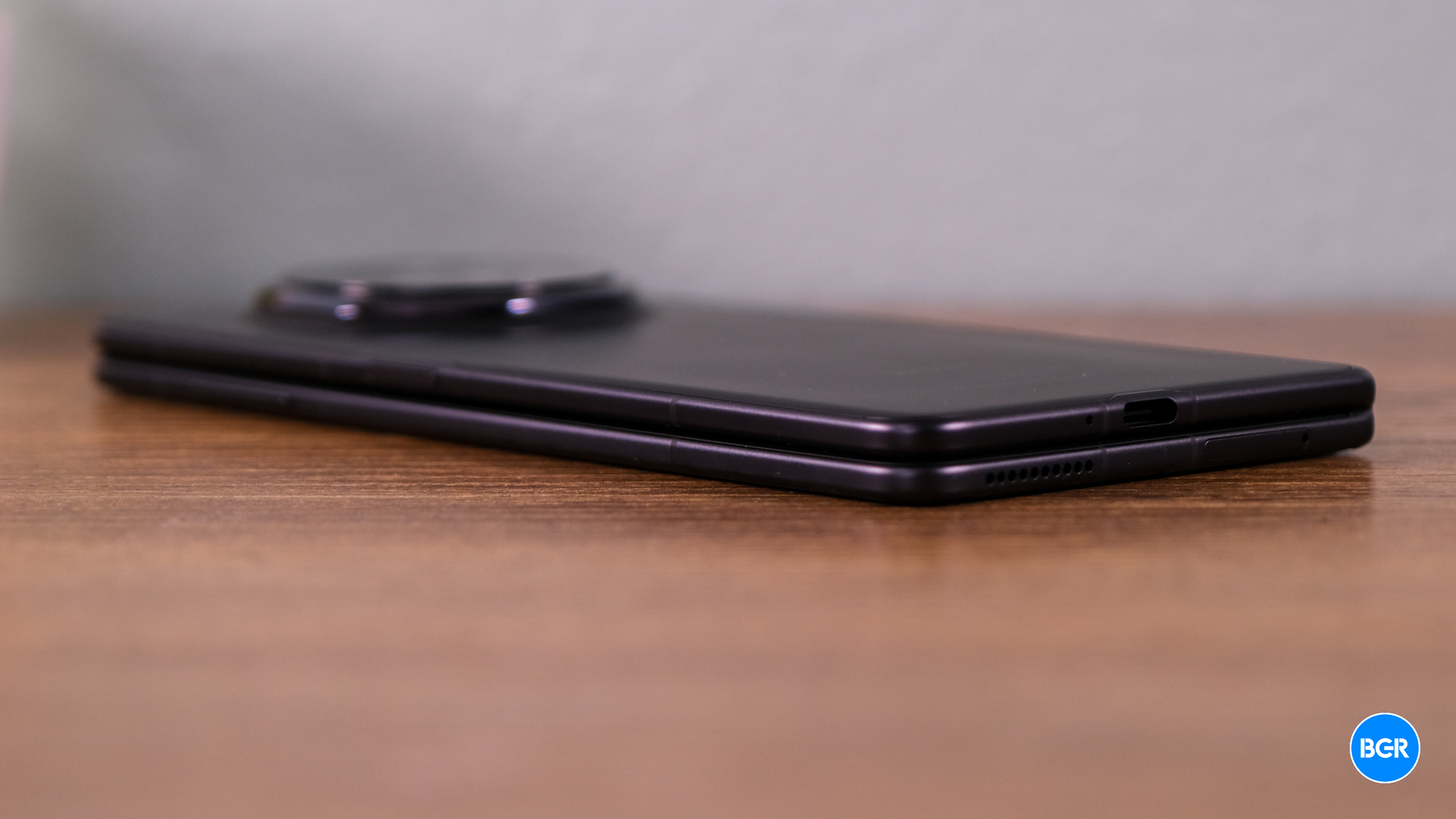
There are aspects of its build that aren’t perfect, but it feels pretty premium too. It doesn’t feel cheaply made, and the hinge feels solid enough to withstand day-to-day use. I will say that I didn’t find the build quality to be quite as premium as the new Google Pixel 9 Pro Fold, but it’s still very good, and it certainly feels like a high-end phone.
Apart from being thinner, the Magic V3 also redesigns the camera module on the back of the phone to be more in line with other modern Honor devices. I’m not a huge fan of the octagonal camera module shape, but it certainly doesn’t look bad, and you’ll get used to it. In practice, it’s more or less the same as the circular camera modules that have become common from brands like Oppo and OnePlus.
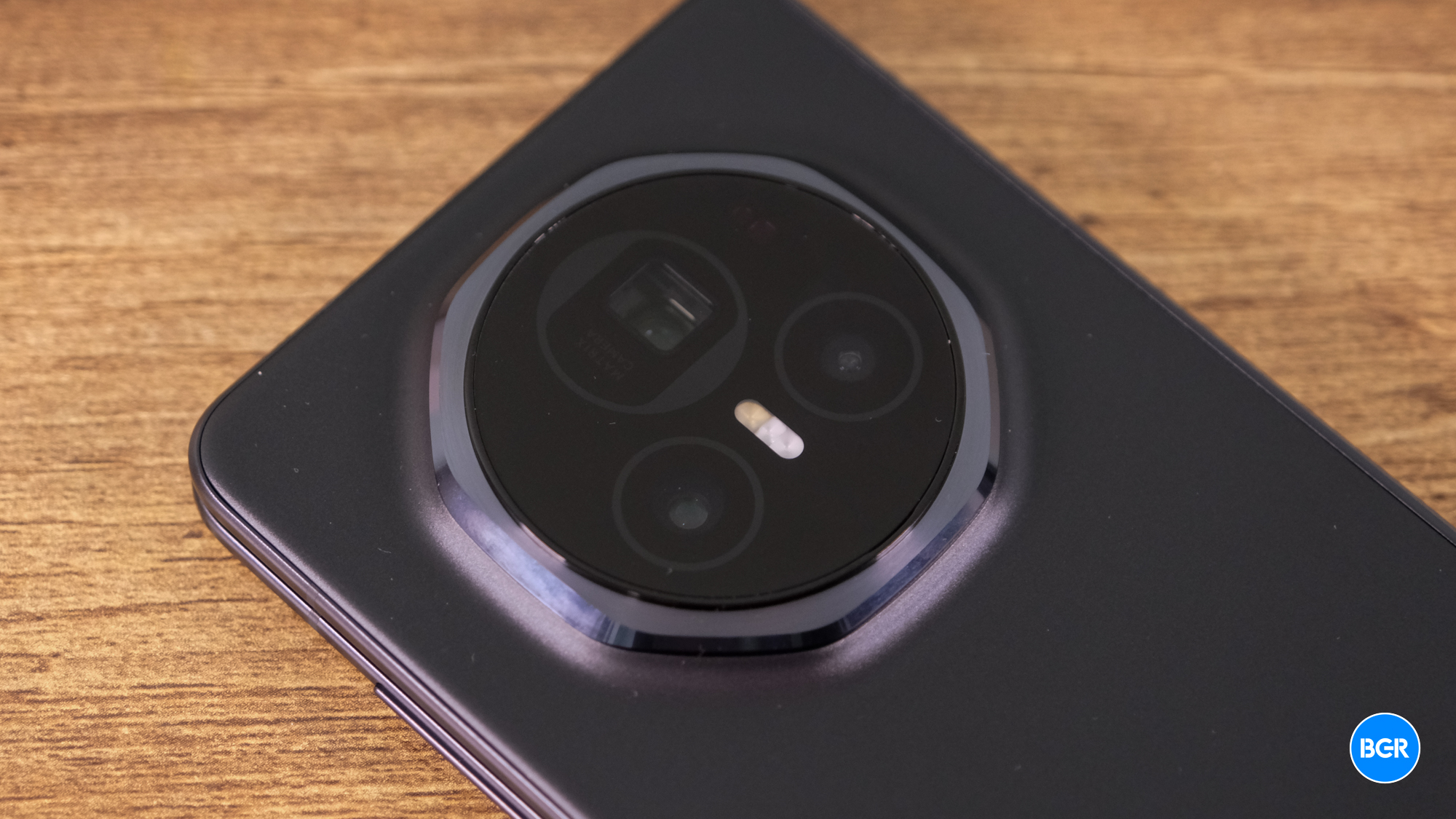
The rest of the design of the phone is pretty similar to last year, though, but that’s a good thing. The phone has a similar form factor to the likes of the Pixel 9 Pro Fold and OnePlus Open, which is to say that the aspect ratio of the front display is similar to a conventional phone. That’s helpful for a device this thin, as you might well use the phone like a conventional device in day-to-day life, and it’s thin enough to be used one-handed perfectly fine. It seems that this is the trend for fold-style phones, and I wouldn’t be surprised to see Samsung take this approach for some future-generation Galaxy Z Fold devices. The displays are more or less the same size as last year too.
Despite the fact that the device folds flat, the crease on the inside of the phone isn’t very noticeable. Honor was quick to tout that the crease isn’t very deep during its launch event for the Magic V3. And indeed, while it’s still there, and you can feel it when you run your finger over it, you won’t really notice it in day-to-day life.
When unfolded, you’ll find a USB-C port on the bottom of the right-hand side of the device, along with a power button with a built-in fingerprint sensor on the right edge. On the left edge, you’ll find the volume rocker. I will say that the fingerprint sensor was a little buggy in my testing. It didn’t seem to walk me through the whole process of adding it, so it wasn’t very accurate most of the time. I removed it and re-added it a few times, and eventually, the problem seemed to resolve itself. Hopefully, this is just a software bug that will be ironed out.
I’m not surprised that the Magic V3 is so thin, considering the V2 from last year. But something about the thinness still shocks me every time I unfold it. It really does feel incredible.
Beautiful crisp displays
The displays on the Honor Magic V3 are stunning. They’re bright, vibrant, and crisp.
The cover display on the phone is 6.43 inches, and it’s an LTPO OLED display that can range up to 120Hz for a very smooth experience. It’s not quite as high resolution as some screens, as it has a 1060p resolution. But that’s not really a huge deal, and I found it still crisp enough to make the text crisp and images clear. That’s not to mention the fact that it gets extremely bright, and I found that it was easily bright enough to see in all situations, including outdoors in direct sunlight.
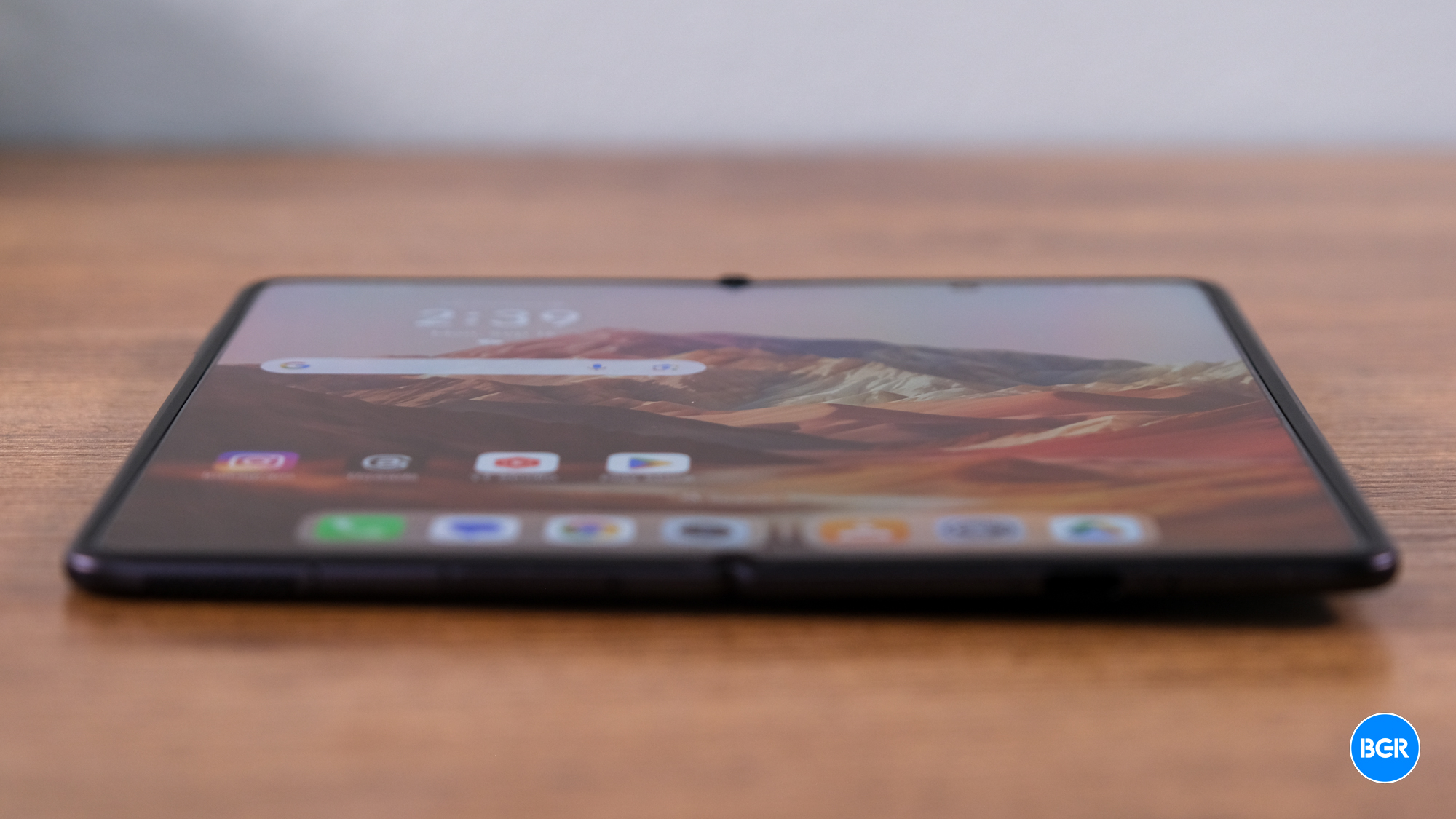
The interior display is beautiful too. It’s also an LTPO OLED display with the ability to range up to 120Hz, and it comes in at a huge 7.92 inches. It’s not as big as the Pixel 9 Pro Fold’s monster display, but it’s still quite large and easily big enough for productivity. Its resolution is 2156 by 2344, which gives it a 402 pixel per inch density. That’s the same as the cover display, so again, it’s not quite as high resolution as some interior screens but is easily detailed and clear enough for all use cases. It’s also not quite as bright as the cover screen, but I still found this to be bright enough for all situations and could still see it easily outdoors.
Flagship-level performance
With a Qualcomm Snapdragon 8 Gen 3 chipset and 16GB of RAM, the phone is able to perform very well too. I found that in day-to-day life, it handled everything I could throw at it with ease, including heavier multitasking and mobile gaming. That’s good news for a foldable device like this that is arguably built for productivity, as it means you can rely on it for work tasks and media consumption without worrying about whether or not it can keep up.
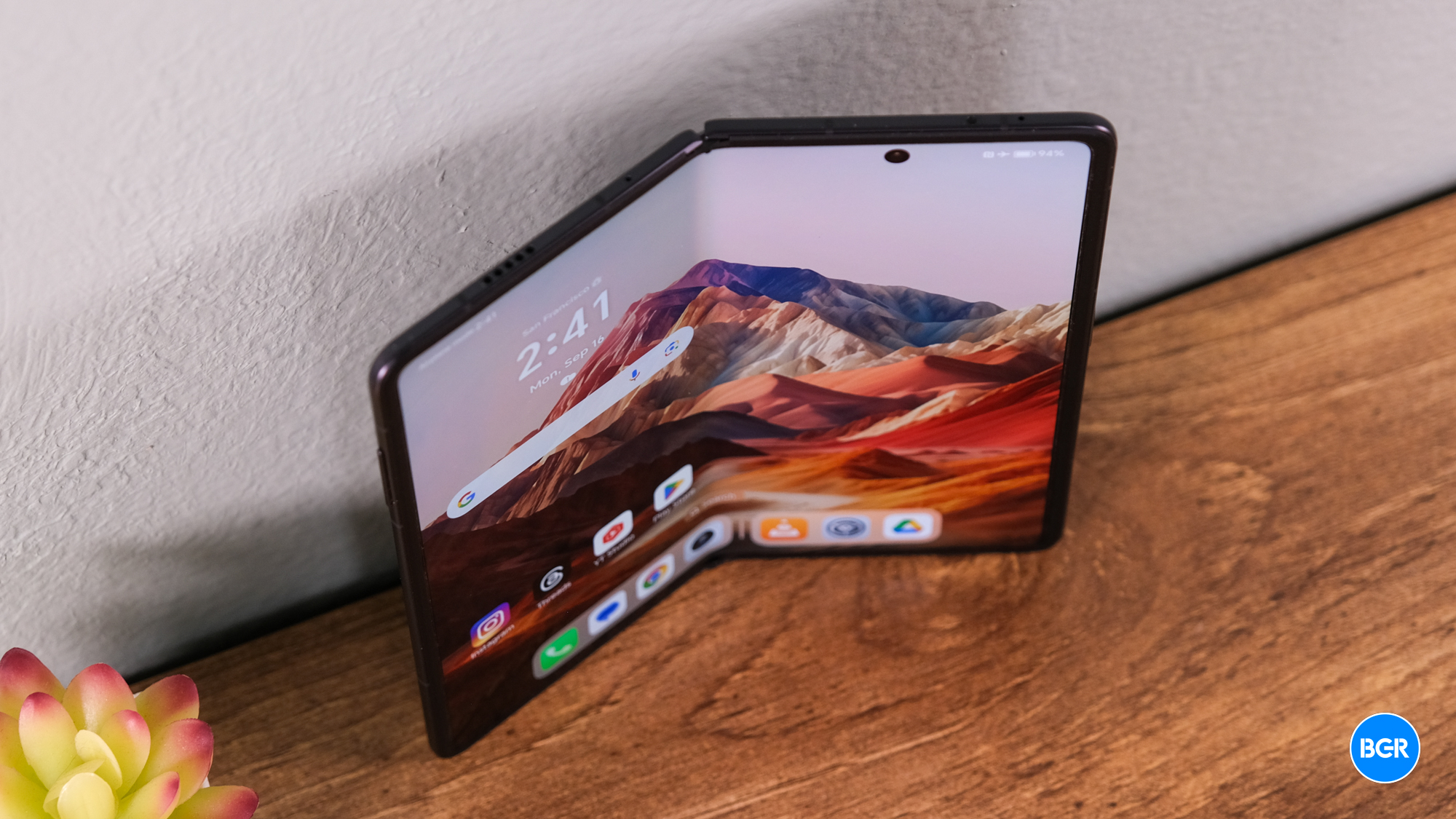
That also makes its performance better than a certain other foldable phone. Now, to be very clear, I never had any problems with the performance of the Pixel 9 Pro Fold, and I also found that it was easily able to handle everything I could throw at it. But, at least on paper, the Magic V3 does perform better, thanks to its higher-end chipset.
Good battery life and wireless charging
Despite the incredibly thin build, the Honor Magic V2 had solid battery life that was able to get most through a full day of moderately heavy use. Thankfully, the Magic V3 continues that trend. To be clear, the phone doesn’t have the most amazing battery life of all time, and it certainly isn’t going to last you two days of use, but I found that it was easily able to get me through a day without fear of running out before the end of the day. And most days, I had around 30% remaining by bedtime.

Even better than the actual battery life, though, is charging. The phone supports super-fast 66W wired charging, which is pretty quick, but thankfully this year, Honor has added wireless charging to the mix. That’s huge news, especially for global markets that rely on wireless charging more. I use almost exclusively wireless charging and have wireless charging pads throughout my home. The device actually supports 50W wireless charging, though, of course, you’ll have to use Honor’s first-party accessories to hit those speeds. It also supports Qi wireless charging, so you don’t have to buy those accessories just for the privilege of wireless charging. You can still use the charging pads you might already have; they just won’t charge as quickly.
Unfortunately, it doesn’t support the new Qi2 magnetic wireless charging standard, so you won’t be able to attach the phone to magnetic accessories. That said, I did find that the camera module on the back held the phone in place on some upright Qi2 charging stands, so if you trust the camera module’s ability to keep the device in place, you can actually use charging stands and have the phone wirelessly charge while it’s on them. Hopefully, the Magic V4 will get actual support for Qi2.
A solid camera overall

One of the biggest downsides to the Magic V2 was its camera. Now, to be clear, the camera on the Magic V2 wasn’t bad at all. It just wasn’t flagship level, and considering the price of these foldable phones, they really should offer cameras that are as good as their cheaper, high-performance devices. The Magic V3 doesn’t completely solve every single camera issue, but the camera on the device is actually very good.
The Magic V3 has a triple camera array made up of a 50-megapixel main camera, a 40-megapixel ultrawide camera with a 112-degree field of view, and a 50-megapixel telephoto camera with 3.5x optical zoom. I wish the telephoto camera could zoom a little further, as the standard these days on flagship phones seems to be around 5x.
That said, the camera quality here is very good. The main camera was able to capture vibrant and detailed shots in all situations, including low-light conditions, which was great to see. While the telephoto camera didn’t zoom quite as far as some others, it still produced solid-looking images. The ultrawide camera was perhaps the worst of the three, and it was easy to push it to its limits. But it still serves a purpose and can come in handy—just don’t expect images to look quite as good as those from the other two cameras.
The biggest exception is the front-facing cameras, which, frankly, look bad. The phone has two front-facing cameras — one cut out of the cover display and the other in the internal display. They’re both 20-megapixel cameras, and they both took pretty sub-par photos. I get the temptation to skimp on front-facing cameras — after all, with a foldable device, you can use the rear camera array for selfies. But that can be a pain when you just want to take a quick selfie.
Software that takes work
I want to give Honor some credit here. It is working on the software, and there are things about the software that have been getting better. For starters, the device ships with Google’s Gboard rather than Honor’s own stock keyboard. Gboard is one of the best keyboards on Android, especially for foldable phones — though no matter how often I try, I still can’t get used to the split keyboard.
And, if you spend a bit of time and effort, you can customize the software to be better. There are tons of extra apps pre-installed on the phone, but some of them can thankfully be uninstalled, and some of them can be disabled.
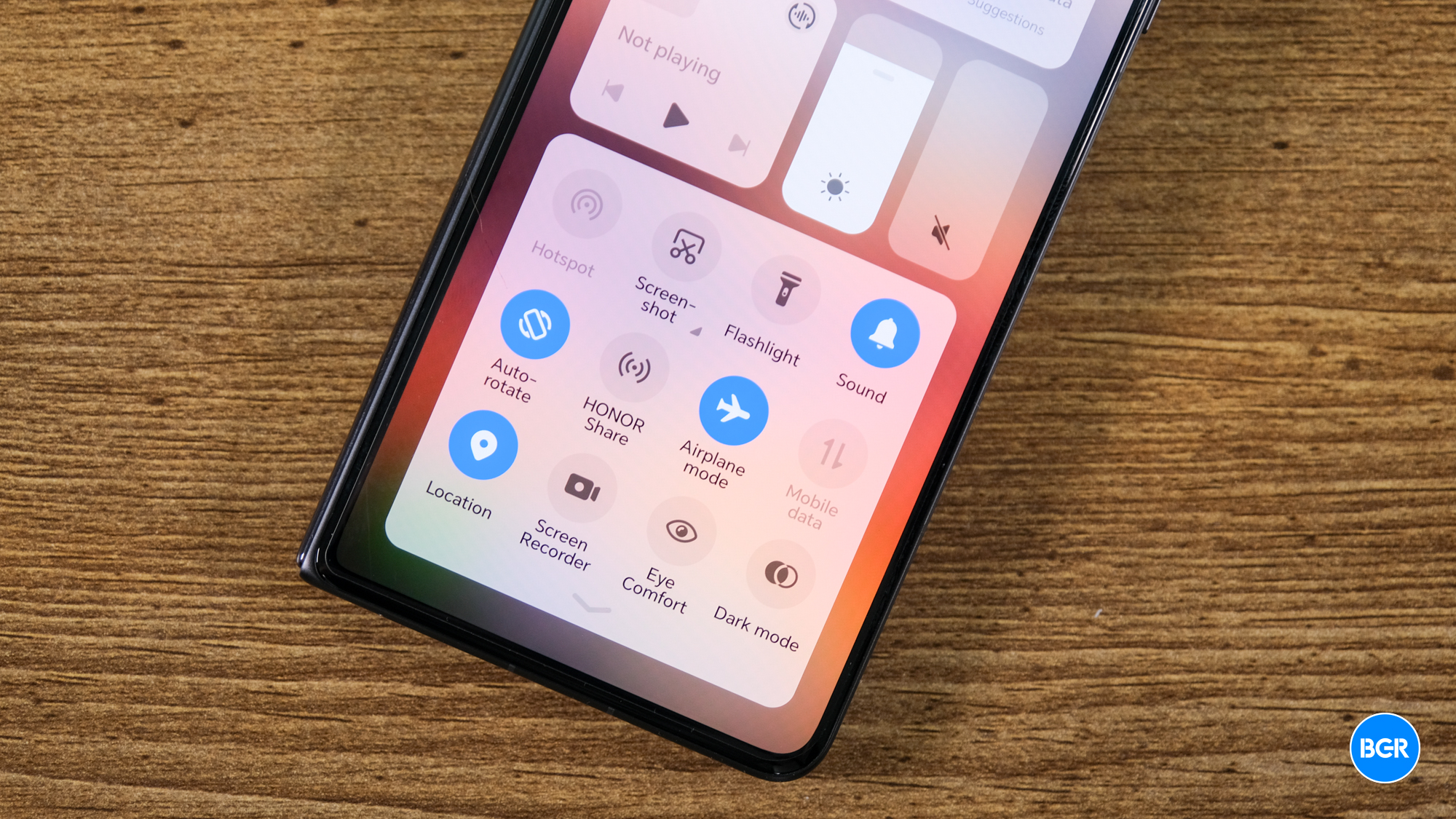
But let’s be clear. Compared to software experiences on devices like the Pixel 9 Pro Fold, the software on the Magic V3 is still a bit of a mess. Those pre-installed apps? Yeah, there are tons of them, including multiple office suites (WPS and Honor Docs), along with what looks to be two SIM Toolkit apps. Again, some of these can be uninstalled or at least disabled, but you’ll have to live with the others. That’s not to mention all the software bugs.
My wish list for Honor software? Stop trying to do so much. Scale back. Get rid of all the bloat, and don’t assume that Android users want a skin that emulates iOS features (even as a mostly-iOS user myself). Also, it should rely more on Google’s stock apps instead of building more default apps that duplicate Google’s and serve essentially the same purpose. Of course, this is a problem that users of Chinese Android phones are all too familiar with.
Conclusions
The Honor Magic V3 represents a solid improvement, but when all is said and done, the phone’s strengths and weaknesses are the same as the Magic V2. It does have a better camera, though that camera isn’t quite as good as it could be — and while the software is slightly better, it’s still the worst thing about the device. But the trade-off is that it still has a stunningly thin build, performs well, and still has a good battery life. Oh, and I’m really glad they finally added wireless charging.
The competition
The competition really depends on where you live, but the biggest and most influential foldable phones right now include the Pixel 9 Pro Fold, the OnePlus Open, and the Galaxy Z Fold 6. All three of these phones offer better software than the Magic V3, which has a big impact on the overall experience. But, while the Pixel 9 Pro Fold is quite thin, none of the three devices are anywhere near as thin as the Magic V3.
If you want a super thin phone (which makes sense — foldables can get thick), then the Magic V3 is the foldable to buy. But if you want the best software experience, then the Pixel 9 Pro or the OnePlus Open are better choices.
Should I buy the Honor Magic V3?
Yes, if you want the thinnest foldable phone out there right now — but consider the other options with better software too.














